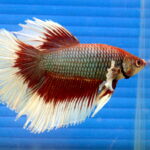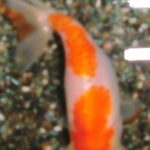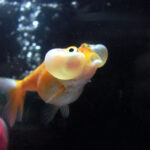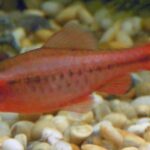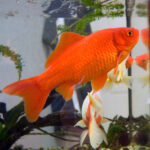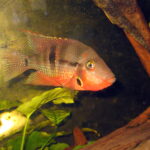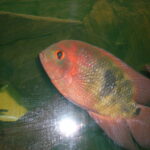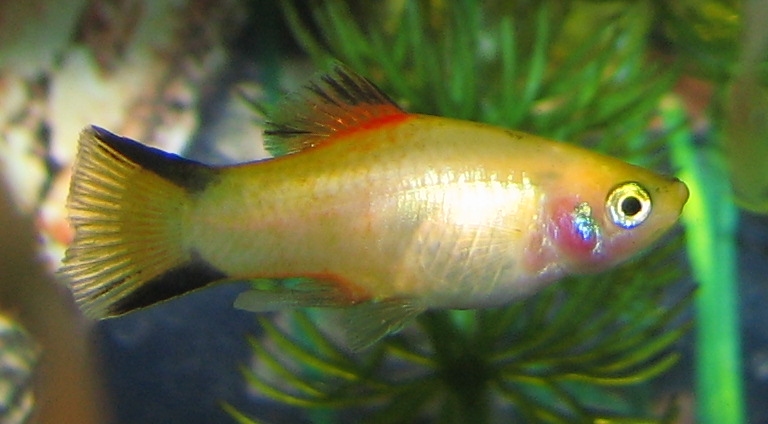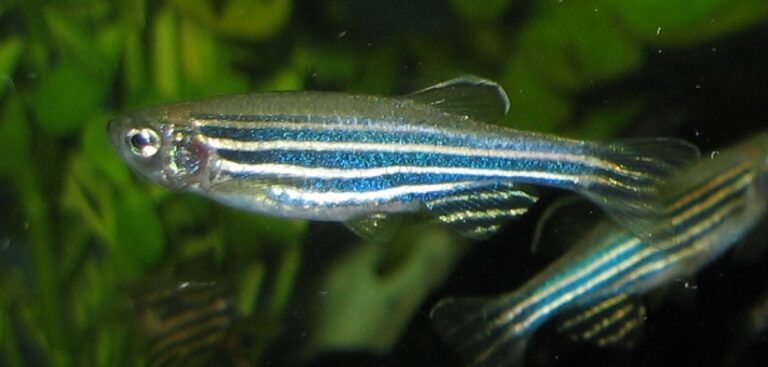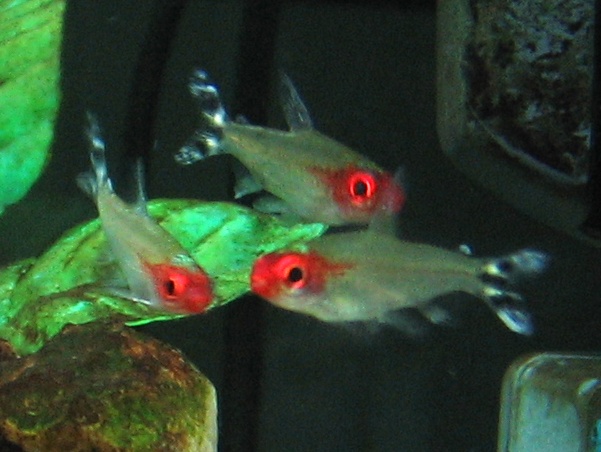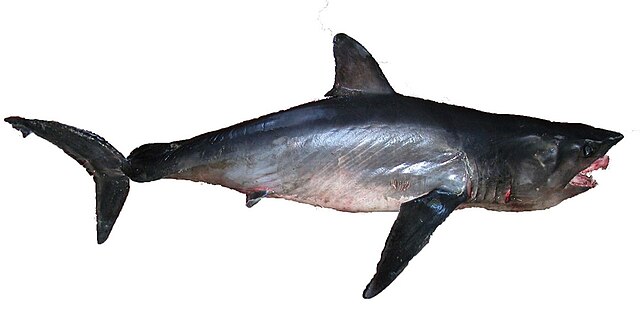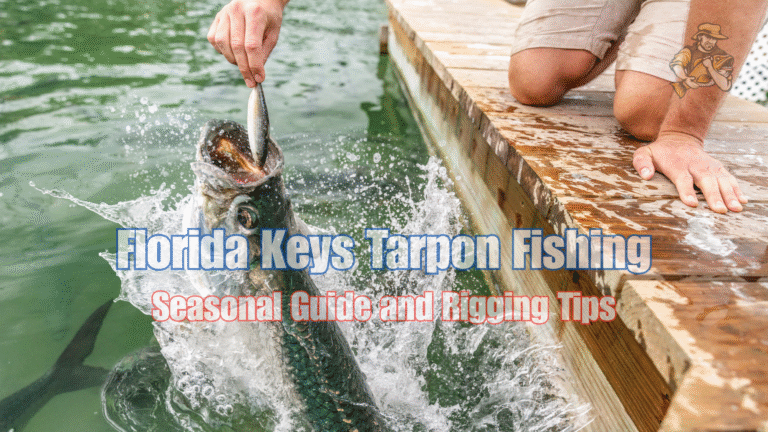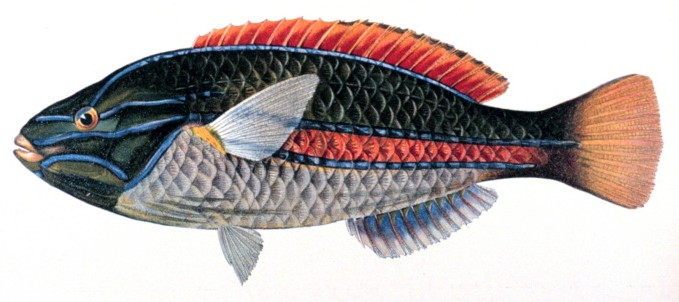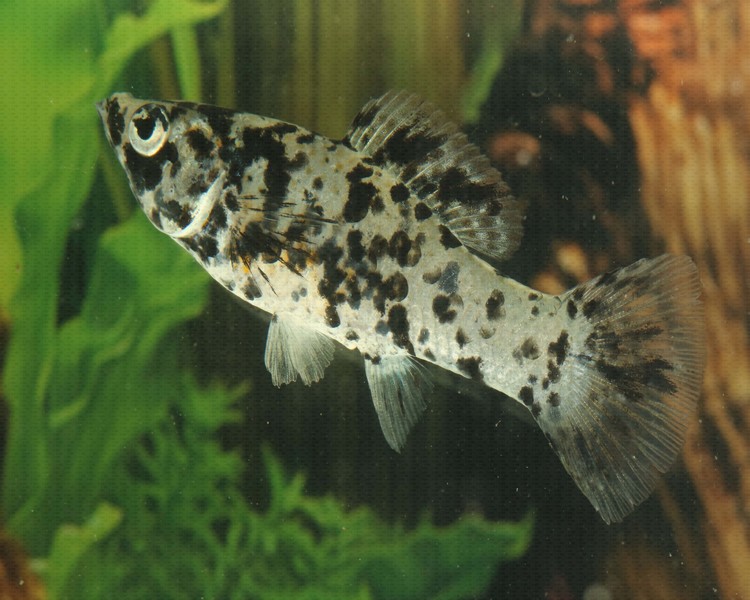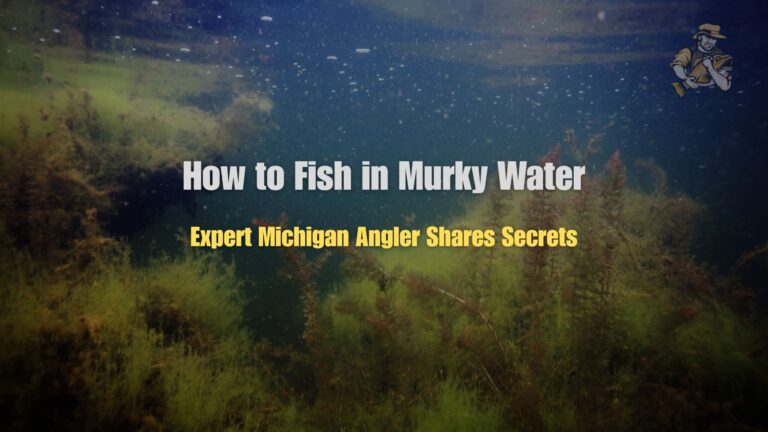Gouramis
By Ryan Maron | Last Modified: June 6, 2025
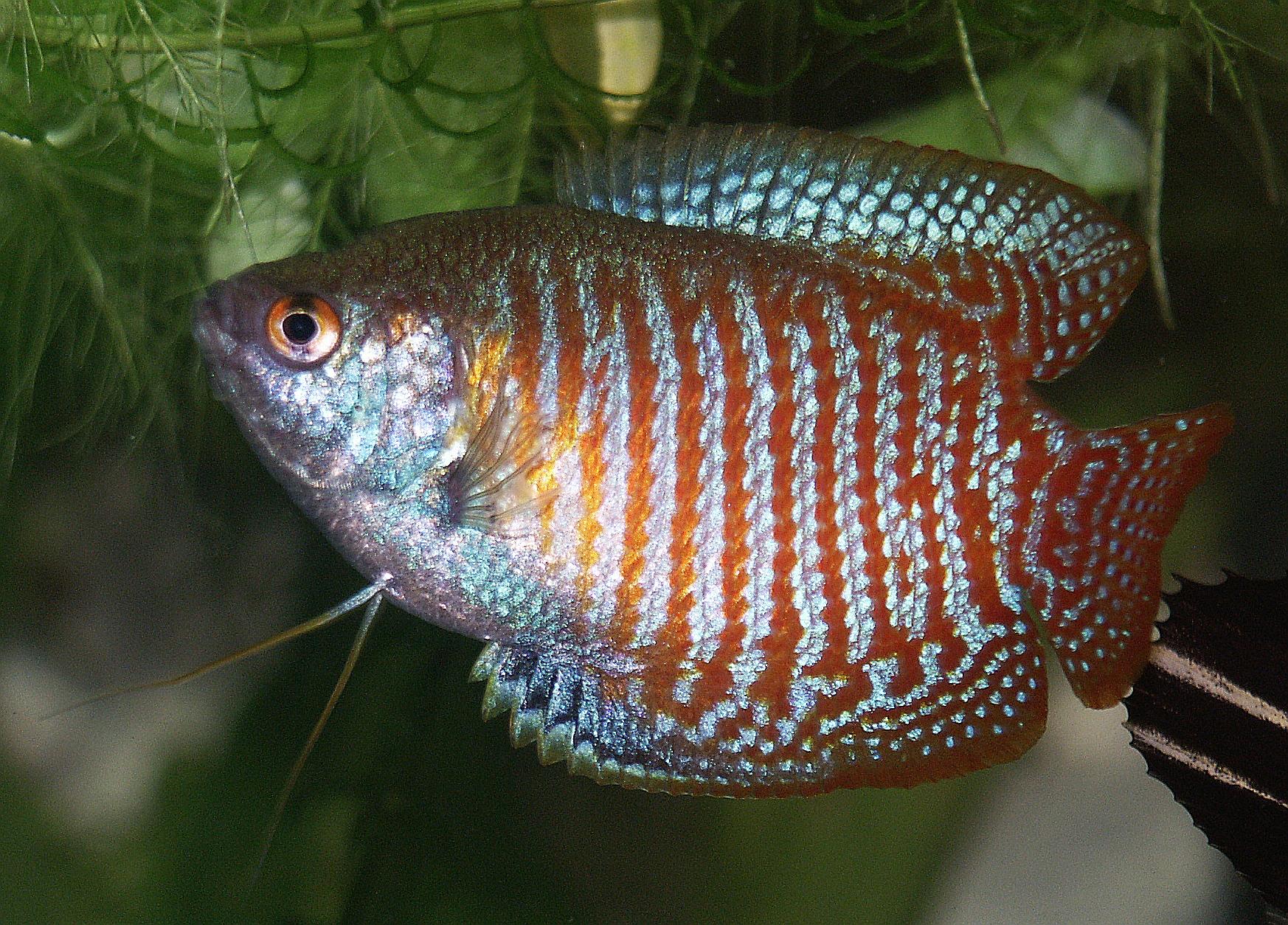
Gouramis represent one of the most fascinating and diverse groups of freshwater fish, belonging to the family Osphronemidae within the suborder Anabantoidei. These remarkable fish are distinguished by their specialized labyrinth organ, an adaptation that allows them to breathe atmospheric oxygen directly from the water’s surface. This unique respiratory system has enabled gouramis to thrive in oxygen-poor environments throughout their native range in Southeast Asia, making them crucial components of tropical freshwater ecosystems.
The ecological significance of gouramis extends far beyond their physiological adaptations. These fish serve as important intermediate predators in aquatic food webs, controlling populations of small invertebrates while providing prey for larger fish species. Many gourami species also function as ecosystem engineers, with some varieties constructing elaborate bubble nests that create microhabitats for various aquatic organisms. Their omnivorous feeding habits contribute to nutrient cycling within freshwater systems, while their territorial behaviors help structure fish communities in shallow, vegetated waters.
From an economic perspective, gouramis hold substantial value in both commercial aquaculture and the ornamental fish trade. Several species, particularly the giant gourami (Osphronemus goramy), serve as important food fish in Southeast Asian markets, while smaller ornamental varieties like the dwarf gourami (Trichogaster lalius) generate millions of dollars annually in international trade.
| Feature | Details |
|---|---|
| Common Name | Gouramis |
| Scientific Name | Family Osphronemidae (multiple genera) |
| Family | Osphronemidae |
| Typical Size | 2.5-70cm (1-28 inches), 10g-9kg |
| Habitat | Shallow freshwater with dense vegetation |
| Diet | Omnivorous – insects, plants, small fish |
| Distribution | Southeast Asia, Southern Asia |
| Conservation Status | Varies by species – Least Concern to Endangered |
Taxonomy & Classification
The family Osphronemidae encompasses approximately 133 species distributed across 15 genera, making it one of the most taxonomically diverse groups within the anabantoid fishes. The classification of gouramis has undergone significant revision in recent decades, with molecular phylogenetic studies revealing complex evolutionary relationships that have reshaped our understanding of their taxonomic structure.
The major genera within Osphronemidae include Trichogaster, Colisa, Osphronemus, Helostoma, and Trichopsis, each representing distinct evolutionary lineages with unique morphological and behavioral characteristics. The genus Trichogaster contains many of the most familiar aquarium species, including the blue gourami (Trichogaster trichopterus) and the pearl gourami (Trichogaster leerii). These fish are characterized by their thread-like pelvic fins, which have evolved into sensitive tactile organs used for navigation and prey detection in turbid waters.
Recent phylogenetic analyses have revealed that the traditional classification of gouramis based primarily on morphological features does not always reflect their true evolutionary relationships. For instance, the genus Colisa has been synonymized with Trichogaster based on genetic evidence, despite distinct differences in size and coloration patterns. This taxonomic reorganization has important implications for understanding species boundaries and conservation priorities within the group.
The evolutionary history of gouramis spans approximately 50 million years, with fossil evidence suggesting that the labyrinth organ evolved as an adaptation to the increasingly seasonal and oxygen-poor freshwater environments of the Cenozoic era. This respiratory innovation allowed gouramis to colonize habitats that were inaccessible to other fish groups, leading to their remarkable adaptive radiation across Southeast Asia.
Physical Description
Gouramis exhibit extraordinary morphological diversity, ranging from the diminutive sparkling gourami (Trichopsis pumila) at just 2.5 centimeters to the massive giant gourami (Osphronemus goramy), which can exceed 70 centimeters in length and weigh up to 9 kilograms. This size variation reflects their adaptation to different ecological niches, from small forest streams to large river systems and constructed wetlands.
The most distinctive anatomical feature of gouramis is the labyrinth organ, a complex respiratory structure located in the suprabranchial cavity behind the gills. This organ consists of highly folded, vascularized tissue that enables direct oxygen extraction from atmospheric air. The labyrinth organ appears as a spongy, maze-like structure under microscopic examination, with extensive surface area that maximizes gas exchange efficiency. This adaptation allows gouramis to survive in waters with dissolved oxygen levels as low as 1-2 parts per million, conditions that would be lethal to most other fish species.
The pelvic fins of most gourami species have evolved into elongated, thread-like structures equipped with specialized sensory cells. These modified fins function as tactile organs, allowing gouramis to navigate through dense vegetation and detect prey items in murky water conditions. The sensitivity of these fin rays is remarkable, capable of detecting minute water movements and chemical gradients that indicate the presence of food or potential threats.
Coloration patterns in gouramis serve multiple functions, including species recognition, sexual selection, and predator avoidance. Many species exhibit pronounced sexual dimorphism, with males displaying more vibrant colors and extended fin rays during breeding season. The blue gourami, for example, shows distinct blue-green iridescence in males, while females maintain more subdued coloration for camouflage during nest-guarding activities.
Habitat & Distribution
Gouramis naturally inhabit the freshwater systems of Southeast Asia, with their distribution spanning from Pakistan and India in the west to the Philippines and Indonesia in the east. The greatest species diversity occurs in the Mekong River basin, the Chao Phraya River system of Thailand, and the river networks of Borneo and Sumatra. These regions provide the shallow, warm waters with dense aquatic vegetation that gouramis require for optimal survival and reproduction.
The preferred habitats of gouramis include rice paddies, swamps, ditches, and the shallow margins of lakes and slow-moving rivers. These environments are characterized by water temperatures ranging from 22-30°C, pH levels between 6.0-8.0, and abundant vegetation that provides shelter and foraging opportunities. The seasonal nature of many Southeast Asian freshwater systems, with pronounced wet and dry periods, has shaped the physiological and behavioral adaptations observed in gourami populations.
Water quality parameters in natural gourami habitats often fluctuate dramatically due to seasonal rainfall patterns and human agricultural activities. During dry seasons, dissolved oxygen levels may drop to critical levels, making the labyrinth organ essential for survival. The ability to tolerate low oxygen conditions has allowed gouramis to colonize temporary water bodies such as flooded fields and seasonal ponds that dry up completely during certain times of the year.
Human activities have significantly altered the natural distribution patterns of many gourami species. Agricultural expansion and urbanization have destroyed numerous wetland habitats, while the construction of dams and irrigation systems has fragmented river networks. Conversely, the creation of aquaculture ponds and rice paddies has provided new habitat opportunities for some adaptable species, leading to local population increases in certain regions.
Several gourami species have established populations outside their native range through both intentional introductions and aquarium releases. The blue gourami, in particular, has become established in parts of South America, the Caribbean, and even some temperate regions where heated discharge waters provide suitable thermal conditions.
Diet & Feeding Behavior
Gouramis exhibit diverse feeding strategies that reflect their opportunistic nature and the varied food resources available in Southeast Asian freshwater ecosystems. Most species are omnivorous, with dietary preferences shifting based on habitat conditions, seasonal availability, and life stage requirements. This dietary flexibility has been crucial to their evolutionary success in dynamic aquatic environments.
The feeding apparatus of gouramis includes a moderately protrusible mouth equipped with small, pointed teeth suitable for grasping various prey items. Their pharyngeal teeth are adapted for processing both plant material and small invertebrates, allowing efficient extraction of nutrients from diverse food sources. The relatively small mouth size of most gourami species restricts them to consuming prey items smaller than their head width, typically ranging from microscopic zooplankton to aquatic insects measuring several millimeters in length.
Juvenile gouramis rely heavily on zooplankton, including rotifers, copepods, and cladocerans, which provide the high-protein diet necessary for rapid growth. As they mature, their diet gradually incorporates more plant matter, including algae, aquatic macrophytes, and fallen terrestrial vegetation. Adult gouramis in natural habitats consume significant quantities of insects, both aquatic larvae and terrestrial forms that fall onto the water surface.
The feeding behavior of gouramis varies considerably among species and habitats. Surface-dwelling species like the kissing gourami (Helostoma temminckii) primarily feed on algae and organic detritus scraped from submerged surfaces using their specialized lips. In contrast, species inhabiting deeper waters may engage in more active hunting behavior, pursuing small fish and crustaceans through aquatic vegetation.
Seasonal changes in food availability strongly influence gourami feeding patterns. During monsoon periods, increased water levels and enhanced primary productivity provide abundant feeding opportunities, allowing gouramis to accumulate energy reserves for reproduction. Dry season conditions restrict feeding opportunities, but the labyrinth organ enables gouramis to remain active in oxygen-depleted waters where competing species cannot survive.
Behavior & Adaptations
The behavioral repertoire of gouramis reflects their adaptation to complex aquatic environments characterized by dense vegetation, fluctuating water levels, and variable oxygen conditions. Their most significant behavioral adaptation involves the use of the labyrinth organ, which requires regular trips to the water surface for air breathing. This behavior, known as aerial respiration, occurs at intervals ranging from several minutes to over an hour, depending on water temperature, activity level, and dissolved oxygen concentration.
Territorial behavior in gouramis varies significantly among species and is most pronounced during breeding seasons. Males of many species establish and defend territories encompassing optimal nesting sites, usually areas with calm water and abundant vegetation. Territory size correlates with body size and habitat quality, with larger individuals typically securing prime locations near the water surface where oxygen levels remain stable.
The modified pelvic fins of gouramis serve as sophisticated sensory organs that enable complex behavioral responses. These thread-like structures constantly probe the surrounding environment, detecting water movements, chemical gradients, and physical obstacles. This tactile system proves particularly valuable in turbid waters where visual cues are limited, allowing gouramis to locate prey, avoid predators, and navigate through dense vegetation.
Social behaviors in gouramis range from highly territorial to relatively peaceful, depending on species and environmental conditions. Some species form loose aggregations during foraging activities, while others maintain strict individual territories throughout their adult lives. Aggressive displays typically involve fin spreading, color intensification, and lateral positioning to maximize apparent body size.
The ability to survive in temporary water bodies has led to remarkable behavioral adaptations in some gourami species. When faced with drying habitat conditions, certain species can survive for extended periods in extremely shallow water or even moist substrate, using their labyrinth organ to extract oxygen from humid air. This adaptation allows populations to persist through dry seasons that would eliminate other fish species from temporary wetlands.
Reproduction & Life Cycle
Gourami reproductive strategies demonstrate remarkable diversity, ranging from simple bubble nest construction to complex parental care behaviors. The majority of species are bubble nesters, with males constructing floating foam structures at the water surface using oral secretions mixed with air bubbles. These nests serve as both spawning sites and nurseries for developing embryos, providing optimal oxygen conditions and protection from aquatic predators.
The construction of bubble nests represents one of the most sophisticated parental care behaviors observed in freshwater fish. Males select optimal nest sites in calm, shallow water with adequate vegetation cover, then spend several hours or even days building elaborate structures. The nest architecture varies among species, with some creating simple surface films while others construct complex, multi-layered domes extending several centimeters above and below the water surface.
Courtship behaviors in gouramis involve intricate displays designed to attract females and demonstrate male fitness. Males typically intensify their coloration, extend their fins, and perform ritualized swimming patterns around their nests. The courtship process may continue for several days, with males constantly rebuilding and maintaining their nests while attempting to entice females to spawn.
Spawning typically occurs beneath the bubble nest, with the male wrapping his body around the female to facilitate gamete release. Fertilization is external, and the male immediately collects the fertilized eggs in his mouth before depositing them within the protective bubble structure. A single spawning event may produce 100-1000 eggs, depending on species size and female condition.
Parental care responsibilities fall primarily to males, who guard the nest territory aggressively and maintain the bubble structure throughout the incubation period. Males constantly patrol the nest area, removing fungal-infected eggs, rebuilding damaged portions of the nest, and defending against intruders. The incubation period ranges from 24-48 hours at tropical temperatures, with newly hatched larvae remaining within the nest until they absorb their yolk sacs and develop sufficient swimming ability.
Larval development in gouramis follows a predictable sequence, with the labyrinth organ beginning to develop within the first week after hatching. Young gouramis must reach the surface to fill their labyrinth organ with air, a critical developmental milestone that typically occurs 2-3 weeks after hatching. Juveniles that fail to complete this process successfully cannot survive in their natural habitat conditions.
Predators & Threats
Gouramis face predation pressure from a diverse array of aquatic and semi-aquatic predators throughout their life cycle. Adult gouramis are vulnerable to larger predatory fish including snakeheads (Channidae), catfish (Clariidae), and various cichlid species that share their freshwater habitats. The surface-breathing behavior required by their labyrinth organ creates periodic vulnerability to aerial predators, including fishing birds such as herons, kingfishers, and cormorants.
Juvenile gouramis experience particularly intense predation pressure due to their small size and limited escape capabilities. Aquatic invertebrates including dragonfly nymphs, diving beetles, and backswimmers pose significant threats to newly hatched larvae and small juveniles. The bubble nest construction behavior represents an evolutionary response to this predation pressure, providing protected nursery areas that reduce juvenile mortality rates.
Habitat degradation represents the most significant long-term threat to gourami populations across their natural range. Agricultural intensification has eliminated countless wetland areas through drainage and conversion to crop production. The use of pesticides and fertilizers in rice cultivation creates water quality conditions that can be lethal to gouramis, particularly during vulnerable life stages.
Climate change poses emerging threats to gourami populations through altered precipitation patterns and increased temperature extremes. Extended drought periods can eliminate seasonal breeding habitats, while intense flooding events may disrupt established territories and spawning sites. Rising temperatures may push some species beyond their thermal tolerance limits, particularly in shallow habitats with limited thermal refugia.
The introduction of non-native species has created new competitive pressures and predation threats in many gourami habitats. Introduced predatory fish and aggressive competitors can displace native gourami populations, while aquaculture activities may introduce diseases and parasites that affect wild populations. The interconnected nature of Southeast Asian freshwater systems allows rapid spread of these biological threats across large geographic areas.
Overharvesting for food and ornamental trade has impacted several gourami species, particularly larger varieties valued in commercial fisheries. The giant gourami faces intense fishing pressure in some regions, while smaller ornamental species experience collection pressure for the international aquarium trade. Unsustainable harvesting practices can rapidly deplete local populations, particularly in smaller water bodies with limited recruitment potential.
Conservation Status
The conservation status of gouramis varies dramatically among species, reflecting their diverse habitat requirements and different levels of human impact across their geographic range. The International Union for Conservation of Nature (IUCN) has assessed numerous gourami species, with classifications ranging from Least Concern to Critically Endangered. This variation highlights the complex conservation challenges facing different members of the Osphronemidae family.
Several gourami species maintain stable populations and are classified as Least Concern, including the widely distributed blue gourami and three-spot gourami. These species benefit from their adaptability to modified habitats and their ability to thrive in agricultural water systems such as rice paddies. Their tolerance for variable water quality conditions and their successful reproduction in human-modified environments have helped maintain viable populations despite habitat alterations.
However, numerous endemic species face severe conservation challenges due to restricted ranges and habitat specificity. The chocolate gourami (Sphaerichthys osphromenoides) and several Betta species require pristine forest streams with specific water chemistry parameters. These specialized habitat requirements make them particularly vulnerable to deforestation, agricultural runoff, and urban development pressures.
Critical conservation priorities include the protection of remaining wetland habitats and the restoration of degraded freshwater systems. Many Southeast Asian countries have initiated wetland conservation programs that benefit gourami populations, including the establishment of protected areas and the implementation of sustainable fishing practices. The Ramsar Convention on Wetlands has designated several important gourami habitats as Wetlands of International Importance, providing international recognition and conservation support.
Ex-situ conservation programs have proven valuable for maintaining genetic diversity in threatened gourami species. Many zoological institutions and aquarium facilities maintain breeding populations of rare species, serving as genetic reservoirs and sources for potential reintroduction programs. The ornamental fish industry has also contributed to conservation efforts by developing captive breeding programs that reduce collection pressure on wild populations.
Research initiatives focusing on gourami ecology and population dynamics provide essential information for conservation planning. Long-term monitoring programs in key habitats help identify population trends and environmental threats, while genetic studies reveal important information about species boundaries and evolutionary relationships that inform conservation priorities.
Human Interaction
The relationship between humans and gouramis spans thousands of years, deeply embedded in the cultural and economic traditions of Southeast Asian societies. Archaeological evidence suggests that people have been harvesting gouramis from natural waters and practicing primitive aquaculture techniques for over 2,000 years. This long history of interaction has shaped both human communities and gourami populations across the region.
Commercial aquaculture of gouramis represents a significant economic sector in many Southeast Asian countries. The giant gourami serves as a primary protein source in rural communities and generates substantial income through both domestic consumption and export markets. Modern aquaculture facilities produce millions of tons of gouramis annually, employing advanced breeding techniques and nutrition programs to optimize growth rates and product quality.
The ornamental fish trade has transformed many smaller gourami species into globally traded commodities. Species such as the dwarf gourami and pearl gourami are bred in massive commercial facilities and shipped worldwide to supply the aquarium hobby. This trade generates hundreds of millions of dollars annually and provides employment for thousands of people involved in breeding, distribution, and retail activities.
Traditional fishing methods for gouramis include various passive techniques adapted to their habitat preferences and behavior patterns. Bamboo fish traps placed in shallow, vegetated areas take advantage of gourami movement patterns, while specialized nets designed for use in rice paddies allow selective harvesting without damaging crops. These traditional methods often incorporate sustainable practices that maintain population stability over long time periods.
Educational and research applications of gouramis have contributed significantly to our understanding of fish biology and behavior. Their unique respiratory adaptations make them valuable subjects for physiological research, while their complex breeding behaviors provide insights into evolutionary processes and parental care strategies. Many universities and research institutions maintain gourami colonies for ongoing scientific investigations.
The popularity of gouramis in the global aquarium hobby has fostered international appreciation for Southeast Asian freshwater biodiversity. Aquarium enthusiasts often develop strong interests in conservation issues affecting their favorite species, leading to support for habitat protection initiatives and sustainable collection practices. This cultural connection helps build international support for freshwater conservation programs.
Interesting Facts
The remarkable ability of gouramis to produce audible sounds represents one of their most fascinating behavioral adaptations. Many species generate clicking, croaking, or purring sounds using specialized muscles associated with their swim bladders. These vocalizations serve various functions, including territorial defense, courtship communication, and distress calls. The sounds are particularly prominent during breeding season, when males use acoustic displays to attract mates and warn competitors.
Some gourami species demonstrate extraordinary parental care behaviors that extend far beyond typical fish reproduction strategies. Male chocolate gouramis actually brood their eggs in their mouths for up to two weeks, similar to the behavior observed in cichlid fish. During this period, the males cannot feed and must carefully balance their eggs while maintaining normal respiratory functions, representing a significant parental investment rarely seen in other freshwater fish families.
The kissing gourami earned its common name from a unique feeding behavior that resembles kissing between individuals. However, this behavior actually represents a form of competitive interaction where individuals use their specialized lips to push against each other in contests of strength. The “kissing” action helps establish dominance hierarchies and resolve territorial disputes without causing serious physical injury.
Gouramis possess remarkable homing abilities that allow them to navigate back to specific locations across complex aquatic landscapes. Research has demonstrated that some species can return to preferred territories after being displaced several kilometers away, using a combination of chemical cues, magnetic orientation, and landmark recognition. This navigational ability proves crucial for maintaining breeding territories and accessing seasonal feeding areas.
The labyrinth organ of gouramis represents one of the most sophisticated respiratory adaptations found in freshwater fish. This structure develops gradually during the first weeks of life, requiring young gouramis to make their first trip to the water surface at precisely the right developmental stage. Juveniles that surface too early may drown, while those that wait too long may suffocate, making this developmental milestone critical for survival.
Several gourami species exhibit remarkable longevity for freshwater fish of their size, with some individuals living over 15 years in optimal conditions. This extended lifespan allows for complex social learning and the development of sophisticated behavioral repertoires. Older individuals often display enhanced territorial defense strategies and improved parental care behaviors compared to younger fish.
The economic impact of gourami aquaculture extends far beyond simple food production, supporting entire supply chains that include feed production, equipment manufacturing, and distribution networks. In Thailand alone, gourami farming generates over $200 million annually and provides employment for more than 50,000 people across rural communities.
Frequently Asked Questions
What makes gouramis different from other freshwater fish?
Gouramis possess a unique labyrinth organ that allows them to breathe atmospheric oxygen directly from the water surface, unlike most fish that rely solely on gills. This adaptation enables them to survive in oxygen-poor waters and temporary habitats where other fish cannot survive. Additionally, their modified pelvic fins function as sensitive tactile organs for navigation and prey detection in murky water conditions.
How do gouramis build and maintain their bubble nests?
Male gouramis construct bubble nests by mixing oral secretions with air at the water surface, creating floating foam structures that serve as spawning sites and nurseries. The construction process involves carefully blowing bubbles coated with protective proteins and positioning them to form stable platforms. Males continuously maintain these nests by adding fresh bubbles, removing debris, and rebuilding damaged sections throughout the breeding period.
Can gouramis survive in different water conditions than their natural habitat?
Many gourami species demonstrate remarkable adaptability to varying water conditions, which has contributed to their success in aquaculture and as aquarium fish. However, they generally prefer warm water temperatures between 22-30°C and slightly acidic to neutral pH levels. Their labyrinth organ provides significant advantages in poor water quality conditions, but extreme changes in temperature, pH, or chemical composition can still prove harmful or fatal.
Why are some gourami species endangered while others are common?
The conservation status of different gourami species depends largely on their habitat specificity and adaptability to human-modified environments. Species with broad habitat tolerance and flexible dietary requirements, like blue gouramis, maintain stable populations and may even benefit from agricultural development. In contrast, species requiring pristine forest streams or specific water chemistry parameters face severe threats from habitat destruction and are often classified as endangered or critically endangered.
Conclusion
Gouramis represent one of the most remarkable examples of evolutionary adaptation to challenging freshwater environments, with their unique labyrinth organ enabling survival in conditions that would prove lethal to most other fish species. Their ecological importance extends throughout Southeast Asian freshwater systems, where they serve as crucial links in aquatic food webs while supporting significant economic activities ranging from subsistence fishing to international ornamental trade. As habitat pressures continue to intensify across their native range, the conservation of both common and rare gourami species will require coordinated efforts combining habitat protection, sustainable use practices, and continued research into their complex ecological requirements.
Share The Article:
More Fish Species:
-
Spinner Shark
The Spinner Shark (Carcharhinus brevipinna) stands as one of the ocean’s most distinctive and acrobatic predators, earning its name…
-
Platy Fish
The Platy Fish, scientifically known as Xiphophorus maculatus, represents one of the most popular and widely distributed freshwater aquarium…
-
Zebra Danio
The Zebra Danio (Danio rerio) stands as one of freshwater aquarium keeping’s most recognizable and scientifically significant species. This…
-
Pearl Gourami
The Pearl Gourami stands as one of the most recognizable and ecologically significant members of the labyrinth fish family,…
-
Sailfin Molly
The Sailfin Molly stands as one of the most distinctive freshwater fish species in both wild ecosystems and aquarium…
-
Rummy Nose Tetra
The Rummy Nose Tetra stands as one of the most distinctive and recognizable small freshwater fish species in South…
Discover
-
Longfin Mako Shark
The Longfin Mako Shark represents one of nature’s most enigmatic and misunderstood predators, embodying both the raw power and…
-
Florida Keys Tarpon Fishing: Seasonal Guide and Rigging Tips
I still remember my first tarpon hookup in the Florida Keys like it happened yesterday, not 17 years ago….
-
7 Best Fly Fishing Foods That Trout Can’t Resist in 2025
If there’s one thing I’ve learned after three decades of fly fishing, it’s that trout can be maddeningly selective…
-
Caribbean Inshore Fishing: Bonefish and Permit Tactics
There’s something almost magical about stalking the shallow flats of the Caribbean. I still remember my first bonefish –…
-
East Coast Surf Fishing: Targeting Striped Bass and Bluefish from Shore
When I first tried East Coast surf fishing nearly 15 years ago, I was absolutely terrible at it. I…
-
7 Shark Fishing Tactics That Actually Work (Expert Guide)
Shark fishing remains one of those bucket-list experiences that separates casual anglers from the truly adventure-hungry. But here’s the…
Discover
-
Basking Shark
The Basking Shark stands as one of the ocean’s most magnificent gentle giants, representing the second-largest fish species on…
-
Rainbowfish
Rainbowfish represent one of the most visually striking and ecologically significant groups of freshwater fish found across Australia, New…
-
North Jersey Fishing Guide: Best Lakes, Rivers & Seasons
If you’ve never experienced the fishing in North Jersey, you’re missing out on some genuinely underrated angling opportunities. From…
-
Marble Molly
The Marble Molly (*Poecilia latipinna*) stands as one of the most recognizable and widely distributed ornamental fish species in…
-
How to Fish in Murky Water: Expert Michigan Angler Shares Secrets
Last Tuesday, I was standing knee-deep in chocolate-colored water where Kellogg Creek dumps into the Kalamazoo River. Water visibility:…
-
Sunset Platy
The Sunset Platy (Xiphophorus maculatus), commonly known as the Southern Platyfish, represents one of the most popular and recognizable…



